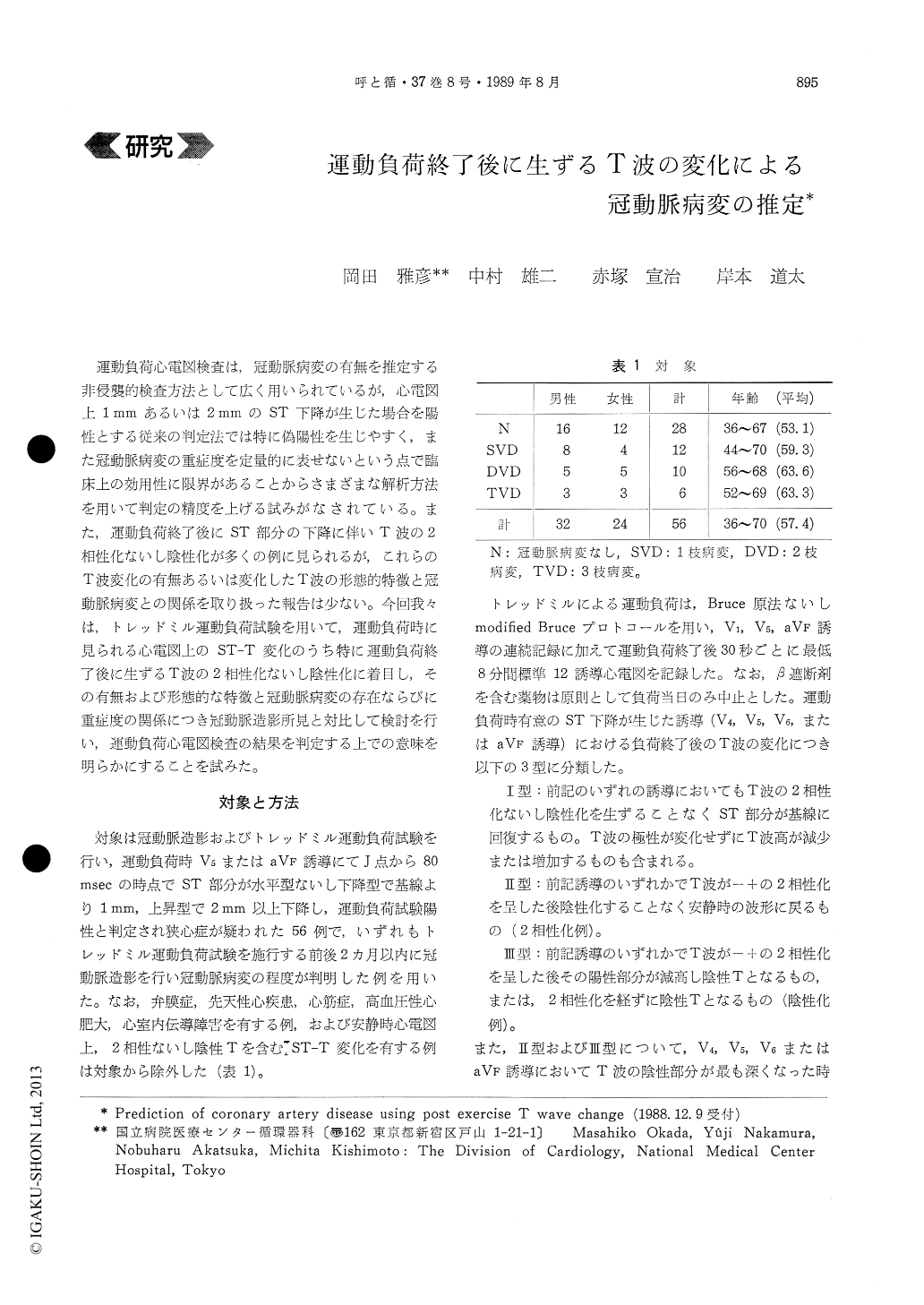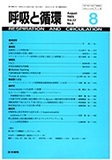Japanese
English
- 有料閲覧
- Abstract 文献概要
- 1ページ目 Look Inside
運動負荷心電図検査は,冠動脈病変の有無を推定する非侵襲的検査方法として広く用いられているが,心電図上1mmあるいは2mmのST下降が生じた場合を陽性とする従来の判定法では特に偽陽性を生じやすく,また冠動脈病変の重症度を定量的に表せないという点で臨床上の効用性に限界があることからさまざまな解析方法を用いて判定の精度を上げる試みがなされている。また,運動負荷終了後にST部分の下降に伴いT波の2相性化ないし陰性化が多くの例に見られるが,これらのT波変化の有無あるいは変化したT波の形態的特徴と冠動脈病変との関係を取り扱った報告は少ない。今回我々は,トレッドミル運動負荷試験を用いて,運動負荷時に見られる心電図上のST-T変化のうち特に運動負荷終了後に生ずるT波の2相性化ないし陰性化に着目し,その有無および形態的な特徴と冠動脈病変の存在ならびに重症度の関係につき冠動脈造影所見と対比して検討を行い,運動負荷心電図検査の結果を判定する上での意味を明らかにすることを試みた。
In the evaluation of the exercise stress test, con-ventional electrocardiographic criteria using 1 or 2 mm ST segment depression below the isoelectric line yields many false positive results and is not so useful to predict the severity of coronary artery disease. In this study, we have attempted to predict the pre-sence and the severity of coronary artery disease from the post exercise T wave change.
Fifty-six patients who had positive treadmill exer-cise test results by conventional ST segment criteria and underwent selective coronary arteriography were studied. T wave change was defined as inver-sion or biphasic change in one or more of leads aVF, V4, V5, V6 during the recovery phase, and in the cases who showed T wave changes, T wave configu-lations were also analysed.
Seventeen of 28 patients with and 11 of 28 patients without significant coronary artery disease showed post exercise T wave changes. This difference was not statistically significant. But in the cases who showed T wave changes, the maximum amplitude of the negative component of T wave was significantly greater in the true positive group than in the false positive group. And the development of deeply ne-gative component (more than 1. 5 mm) indicated the presence of multivessel coronary artey disease. In the cases who showed the negative component of T wave less than 1 mm, the characteristics of T wave configulation including the amplitude, height of po-sitive component, and the deapth from the isoelectric line were different between the 2 groups. These results suggest that careful observation of T wave during the recovery phase is useful to improve the diagnostic accuracy of the exercise electrocardio-gram.

Copyright © 1989, Igaku-Shoin Ltd. All rights reserved.


